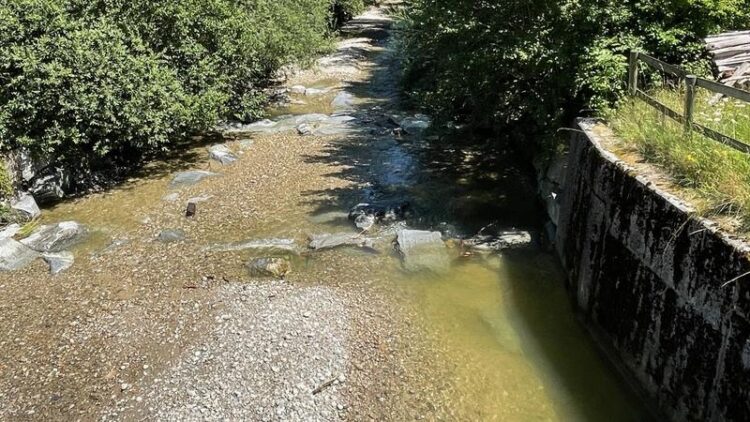Researching the spread of drought

The study shows that 30 percent of precipitation deficits lead to low water levels, as here at the «Luthern» stream in the canton of Lucerne.
(c) Andreas Bättig
It is important for water management to understand how drought spreads. In a new study, researchers from the WSL Institute for Snow and Avalanche Research SLF show that in every third case, atmospheric drought is followed by low water levels. More rarely does drought have a negative impact on groundwater.
With climate change, extreme climate events such as longer dry spells are becoming more frequent. This can have a negative impact on water management, for example in agriculture. If a large area suffers from drought, it becomes difficult to transport water for irrigation from one area to another.
Therefore, it is important to understand how drought simultaneously affects river levels and groundwater levels over large areas. Researchers at the SLF have now analysed data from 70 river catchment areas in Central Europe to investigate how likely it is that different areas will be affected by drought at the same time.
Understanding spatial distribution
In their study, the researchers investigated the question of whether a precipitation deficit leads to a runoff deficit in the rivers and ultimately to a groundwater deficit. Their focus was on the spatial extent.
«We found that 30 percent of precipitation deficits lead to low water levels, which has a negative impact on groundwater in 40 percent of cases,» says Manuela Brunner, author of the study.
«I had assumed that the longer a drought lasts, the more widespread it becomes. But this is not the case with groundwater,» she explains. While the authors show that a runoff deficit is more widespread than the precipitation deficit causing it, the spatial extent of the groundwater deficit in turn decreases in comparison to the spread of the runoff deficit.
Soil layers influence the runoff
This discrepancy surprised the researchers, but can be explained by the different soil structures: porous material allows the water to seep away better and faster than loamy soil, for example. This is why the spread of the deficit can locally be delayed.
In addition, the aquifer can store a lot of water. Depending on the area, drought has no effect or only a very delayed effect on groundwater levels. «These are good news for irrigation,» comments Manuela Brunner. Even if the rivers have dried up, neighboring groundwater reservoirs may still be partially filled.
Difficult prediction
The study also shows how challenging it is to predict the course of droughts due to the complexity of the water cycle. «The multitude of influencing factors makes it difficult to accurately predict whether a prolonged dry period will lead to dried-up rivers or a groundwater shortage,» says the scientist.
Wissenschaftliche Ansprechpartner:
Prof. Dr. Manuela Brunner, https://www.slf.ch/de/mitarbeitende/brunnerm/, manuela.brunner@slf.ch
Originalpublikation:
Drought Spatial Extent and Dependence Increase During Drought Propagation From the Atmosphere to the Hydrosphere. Geophysical Research Letters. https://doi.org/10.1029/2023GL107918
Media Contact
All latest news from the category: Earth Sciences
Earth Sciences (also referred to as Geosciences), which deals with basic issues surrounding our planet, plays a vital role in the area of energy and raw materials supply.
Earth Sciences comprises subjects such as geology, geography, geological informatics, paleontology, mineralogy, petrography, crystallography, geophysics, geodesy, glaciology, cartography, photogrammetry, meteorology and seismology, early-warning systems, earthquake research and polar research.
Newest articles
Faster, more energy-efficient way to manufacture an industrially important chemical
Zirconium combined with silicon nitride enhances the conversion of propane — present in natural gas — needed to create in-demand plastic, polypropylene. Polypropylene is a common type of plastic found…

Energy planning in Ghana as a role model for the world
Improving the resilience of energy systems in the Global South. What criteria should we use to better plan for resilient energy systems? How do socio-economic, technical and climate change related…

Artificial blood vessels could improve heart bypass outcomes
Artificial blood vessels could improve heart bypass outcomes. 3D-printed blood vessels, which closely mimic the properties of human veins, could transform the treatment of cardiovascular diseases. Strong, flexible, gel-like tubes…





















